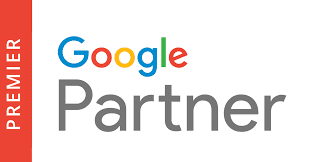From time to time, Google confirms the release of broad core algorithm updates. Some of these updates represent major changes Google makes to its algorithm, and many different websites can see their website ranking affected (both positively and negatively) virtually overnight. For instance, a significant past update, which Barry Schwartz of Search Engine Round Table dubbed the “Medic Update,” was observed to have correlations with health/medical websites. However, this did not mean it only affected these types of sites. More broadly, industry experts like Marie Haynes believed that particular algorithm update also affected Your Money or Your Life sites (YMYL). Google typically does not specify what each update entails, or which sites it is more likely to impact, but looking at trends before and after algorithm updates can give a sense of which sites are doing better or worse, and why.
Google Algorithm Update Theories
Because Google does not specifically announce what each core algorithm update addresses or the ways sites could adapt to increase their website ranking under algorithm changes, there is often a lot of speculation from different webmasters and SEO experts about these updates. Much of this speculation tends to fall under two recurring categories: E-A-T and user intent.
E-A-T Theory
When Google representatives, like Danny Sullivan, have been asked how to recover a website’s ranking on the Search Engine Results Page (SERP) if it dropped after an algorithm update was released, they generally do not give specific answers but tell webmasters to turn to Google’s Quality Raters’ Guidelines (QRG) to create better content and overall sites. Google’s QRG is periodically revised, and past revisions have emphasized what Google calls E-A-T (Expertise, Authoritativeness, and Trustworthiness). Understanding these guidelines is a core part of our SEO services.
Many SEO practitioners believe that shifts in website rankings for many sites after algorithm updates are often related to E-A-T principles. They believe that Google algorithm updates frequently place a premium on the E-A-T of a website, leaving sites to take a big hit if they don’t have quality content on their sites explaining their credentials and authority in their niche.
When discussing E-A-T in the QRG, Google states that “High E-A-T medical advice should be written or produced by people or organizations with appropriate medical expertise or accreditation. High E-A-T medical advice or information should be written or produced in a professional style and should be edited, reviewed, and updated on a regular basis.” This shows how important Google believes E-A-T is, especially in the medical and health fields.
On top of that, the QRG defines YMYL (Your Money or Your Life) pages as “types of pages [that] could potentially impact the future happiness, health, financial stability, or safety of users.” Medical sites do fall under this category, but so do many other types of sites. Google listed the sites that fall under YMYL as:
- Shopping or financial transaction pages (basically any site where you can buy something)
- Financial information pages
- Medical information pages
- Legal information pages
- News articles or public/official information pages important for having an informed citizenry
- Other (this could include car safety information, blogs giving advice on parenting, child adoption sites, etc.)
So, almost every industry falls under the YMYL category, and understanding how your site fits can be crucial. We explore various industries and their unique SEO needs.
As a search engine, Google’s main goal is to provide users with the best possible search experience so that they continue to use Google. So, Google has an extremely high interest in providing users with safe, trustworthy information. This is one reason why Google might update their algorithm to place a higher value on the E-A-T of a website, especially for YMYL sites that could affect the happiness or safety of the user.
User Intent Theory
The other main theory behind many algorithm updates is that Google is trying to more accurately match the searcher’s intent. This theory could explain why even some non-YMYL sites might be affected by an update as well. In this theory, a Google algorithm update would be aiming to provide the user with the exact answer he or she is looking for based on the query.
This would relate to content length and even keyword choice. If a user’s query is broader, Google will presumably pull up results with longer content that will thoroughly describe the subject and provide the user with the information he or she is looking for. However, if a user looks up something much more specific, like, “When is a major sporting event scheduled?” the user most likely isn’t looking for a thousand-word blog post just to tell them the date.
Query intent should inform the type and length of the content provided. The length of different pieces of content is becoming more important based on user needs. Google wants users to find the information they are looking for without being overwhelmed by too much information. This is why many SEOs believe that some Google algorithm updates are not primarily focused on one single factor like E-A-T, but instead on trying to mirror the types of results received with the query intent.
Ultimately, we will probably never know the exact intentions behind every Google update. All we can do is try to understand the trends that followed the change and make choices in an effort to improve our websites and our rankings. To dive into the steps you can take to increase your website rankings following such changes, it’s important to stay informed on SEO best practices. Also, check out the digital marketing services we offer here at Upward Engine and let us help you grow your digital traffic and increase conversions. If you have specific concerns, feel free to reach out.

